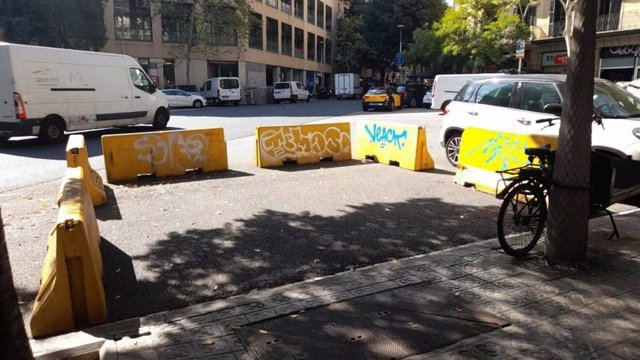Barcelona has taken a significant step towards urban normality with the removal of the last 25 terraces in the Eixample that were installed on the roadway in response to the pandemic.
These terraces, bounded by concrete blocks known as ‘New Jersey’ and temporary yellow pylons, were implemented to support restoration businesses economically affected by COVID-19.
The Barcelona City Council reported that the latter terraces were the subject of appeals filed by the owners of bars and restaurants. After resolving and notifying these appeals, they were withdrawn, thus concluding a process that had already begun last spring with most of the terraces.
Terraces of the Eixample and beyond
The removed terraces were distributed in various locations in the Eixample, covering streets such as Rosselló, Bailén, Floridablanca, Provença, Sepúlveda, Trafalgar, Enric Granados, Sardenya, and the avenues Mistral and Paral-lel.
Although this action has meant the elimination of these structures in the Eixample district, there are still two terraces with concrete blocks pending removal, one in Nou Barris and the other in Sant Martí, with their elimination expected early next year.
Jordi Valls, councilman of Eixample, stated that there are no more terraces with concrete blocks in the district and that those that still remain in the area are legalized and in the process of control and inspection.
Since the beginning of the pandemic, 346 of the terraces that were exceptionally installed in the Eixample have been consolidated, while 622 were denied for not complying with the requirements of the ordinance. Currently, the district has a total of 2,277 authorized terraces, totaling 8,837 tables and 34,170 chairs.
Farewell to the ‘New Jersey
The removal of the concrete blocks and temporary elements of the exceptional terraces represents the end of a phase marked by the so-called ‘New Jersey’. These elements became a distinctive feature of the terraces that were installed on the roadway to compensate for the restrictions and economic losses resulting from the pandemic.
The municipal government, led by Mayor Jaume Collboni, has framed this action in the Pla Endreça, stressing the importance of restoring normality to the city. Jordi Valls explained that all the terraces that remain on the roadway are legalized and under normal control and inspection process.
Beyond the two outstanding terraces in the city with concrete blocks on the roadway, Barcelona has completed the removal of the 3,000 ‘New Jersey’ that accumulated in the pandemic.
With the removal of these last 25 terraces in the Eixample, Barcelona has managed to say goodbye to the ‘New Jersey’, marking the end of an exceptional stage in the functioning of the city in the midst of confinement and protective measures.

